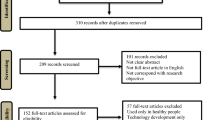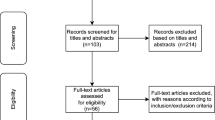Abstract
Stroke is considered one of the main causes of death around the world. Survivors often suffer different kinds of disabilities in terms of their cognitive and motor capabilities, and are therefore unable to perform their day-to-day activities. To regain some of their cognitive as well as motor abilities, they require rehabilitation. To this end, we present a serious game framework based on augmented reality technology that may motivate the patients’ involvement in the rehabilitation exercise. Additionally, we analyze the requirements for such a framework and describe the concept and implementation of the proposed approach. Furthermore, we designed a wireless vibrotactile output device that is attached to a tangible object. The tangible object that is connected to the framework can give haptic as well as audio-visual feedback to the patient in a more motivating and entertaining environment for rehabilitation exercises. The suitability and utility of the proposed framework was evaluated with real stroke patients and compared against the performance of a healthy control group, thus facilitating occupational therapists in assessing a patient’s progress. Our evaluations show that the serious games with vibrotactile feedback are well accepted by patients.














Similar content being viewed by others
References
Alamri, A., Cha, J., El Saddik, A.: AR-REHAB: an augmented reality framework for post-stroke patients rehabilitation. IEEE Trans. Instrum. Meas. 59(10), 2554–2563 (2010)
Alamri, A., Eid, M., Iglesias, R., Shirmohammadi, S., El Saddik, A.: Haptic virtual rehabilitation exercises for poststroke diagnosis. IEEE Trans. Instrum. Meas. 57(9), 1876–1883 (2008)
Alamri, A., El Saddik, Kim, H.-N.: A decision model of stroke patient rehabilitation with augmented reality-based games. In: IEEE Conference on Autonomous and Intelligent Systems (AIS), pp. 1–6 (2010)
Alamri, A., Kim, H.-N., Cha, J., El Saddik, A.: Serious games for rehabilitation of stroke patients with vibrotactile feedback. Int. J. Comp. Sci. Sport 9(2), 52–64 (2010)
Albert, S.J., Kesselring, J.: Neurorehabilitation of stroke. J. Neurol. 259(5), 817–832 (2011)
Aung, Y.M., Al-Jumaily, A.: Ar based upper limb rehabilitation system. In: Biomedical Robotics and Biomechatronics (BioRob), 2012 4th IEEE RAS EMBS International Conference on, pp. 213–218 (2012)
Baranyi, R., Willinger, R., Lederer, N., Grechenig, T., Schramm, W.: Chances for serious games in rehabilitation of stroke patients on the example of utilizing the wii fit balance board. In: IEEE 2nd International Conference on Serious Games and Applications for Health (SeGAH2013), pp. 1–7 (2013)
Bard, C., Fleury, M., Hay, L.: Development of Eye-Hand Coordination Across the Life Span. Columbia: University of South Carolina Press (1990)
Broeren, J., Georgsson, M., Rydmark, M., Sunnerhagen, K.S.: Virtual reality in stroke rehabilitation with the assistance of haptics and telemedicine. In: Proceedings of 4th International Conference of Disability, Virtual Reality and Associated Technology, pp. 71–76 (2002)
Burdea, G.: Review Paper—Virtual Rehabilitation—Benefits and Challenges, pp. 170–176. The International Medical Informatics Association Yearbook of Medical Informatics, Heidelberg (2003)
Burke, J.W., McNeill, M.D.J., D.K.Charles, Morrow, P., Crosbie, J., McDonough, S.: Augmented reality games for upper-limb stroke rehabilitation. In: 2010 Second International Conference on Games and Virtual Worlds for Serious Applications (VS-GAMES), pp. 75–78 (2010)
Chen, Y., Xu, W., Sundaram, H., Rikakis, T., Liu, S.M.: A dynamic decision network framework for online media adaptation in stroke rehabilitation. ACM Trans. Multimed. Comput. Commun. Appl. 5(1), 1–38 (2008)
Choi, Y.: Ubi-rehab: An android-based portable augmented reality stroke rehabilitation system using the eglove for multiple participants. In: 2011 International Conference on Virtual Rehabilitation (ICVR), pp. 1–2 (2011)
Conti, F., Barbagli, F., Balaniuk, R., Halg, M., Lu, C., Morris, D., Sentis, L., Vileshin, E., Warren, J., Khatib, O., Salisbury, K.: The chai libraries. Proc. Eurohaptics 2003, 193–205 (2003)
de Carvalho Souza, A., Rodrigues dos Santos, S.: Handcopter game: a video-tracking based serious game for the treatment of patients suffering from body paralysis caused by a stroke. In: IEEE 14th Symposium on Virtual and Augmented Reality (SVR’12, pp. 201–209 (2012)
Dobkin, B.: Rehabilitation after stroke. N. Engl. J. Med. 352(16), 1677–1684 (2005)
Edwards, D.F., Lang, C.E., Wagner, J.M., Birkenmeier, R., Dromerick, A.W.: An evaluation of the wolf motor function test in motor trials early after stroke. Arch. Phys. Med. Rehabil. 93(4), 660–668 (2012)
El Saddik, A., Hossain, M.S. : Multimedia content repurposing. Encyclopedia of Multimedia. Springer, Berlin (2006)
Feigin, V.L., Lawes, C.M., Bennett, D.A., Anderson, C.S.: Stroke epidemiology: a review of population-based studies of incidence, prevalence, and case-fatality in the late 20th century. Lancet Neurol. 2(1), 43–53 (2003)
Fisk, J., Goodale, M.: The organization of eye and limb movements during unrestricted reaching to targets in contralateral and ipsilateral visual space. Exp. Brain Res. 60, 159–178 (1985)
Foulkes, M., Wolf, P., Price, T., Mohr, J., Hier, D.: The stroke data bank: design, methods, and baseline characteristics. Stroke 19(547–554) (1988). http://stroke.ahajournals.org/cgi/content/abstract/19/5/547
Franklin, D., Osu, R., Burdet, E., Kawato, M., Milner, T.: Adaptation to stable and unstable dynamics achieved by combined impedance control and inverse dynamics model. J. Neurophysiol. 90, 3270–3282 (2003)
Fugl-Meyer, A., Jaasko, L., Leyman, I., Olsson, S., Steglind, S.: The post-stroke hemiplegic patient. 1. A method for evaluation of physical performance. Scand. J. Rehabil. Med. 7(1), 13–31 (1975). http://www.ncbi.nlm.nih.gov/pubmed/1135616
Gielen, C., Heuvel, P., Gisbergen, J.: Coordination of fast eye and arm movements in a tracking task. Exp. Brain Res. 56, 154–161 (1984)
Gillen, G.: Stroke rehabilitation: a function-based approach, 3rd edn. Elsevier, pp. 1–30 (2011)
Go, A.S., Mozaffarian, D., Roger, V.L., Benjamin, E.J., Berry, J.D., Blaha, M.J., Dai, S., Ford, E.S.: Heart disease and stroke statistics—2014 update: a report from the american heart association. Circulation 129: e28–e292 (2013)
Grealy, M., Nasser, B.: The use of virtual reality in assisting rehabilitation. ACNR 13(6), 19–20 (2012)
Heart and Stroke Foundation of Canada.: Participation in cardiac rehab program improves recovery in stroke patients. Science Daily (2013). http://www.sciencedaily.com/releases/2013/10/131016132250.htm
Heidenreich, P.A., Trogdon, J.G., Khavjou, O.A., Butler, J., Dracup, K., Ezekowitz, M.D., Finkelstein, E.A.: Forecasting the future of cardiovascular disease in the united states: a policy statement from the american heart association. Circulation 123: 933–944 (2011)
Hilton, D., Cobb, S., Pridmore, T., Gladman, J.: Virtual reality and stroke rehabilitation: a tangible interface to an every day task. In: The 4th International Conference Disability, Virtual Reality and Associated Technologies pp. 63–70 (2002)
Holden, M.: Virtual environments for motor rehabilitation: review. Cyberpsychol. Behav. 8(3), 187–211 (2005)
Hondori, H.M., Tech, A.W.: Smart mug to measure hand’s geometrical mechanical impedance. IEEE EMBC’ 2011, 4053–4056 (2011)
Hossain, M.S., El Saddik, A.: Scalability measurement of a proxy based personalized multimedia repurposing system. In: Proceedings of IEEE IMTC’2006, pp. 1575–1580 (2006)
HSFCanada: 2014 report on the health of canadians. Heart and stroke foundation of Canada (2014). http://www.heartandstroke.com/site/c.ikIQLcMWJtE/b.8968559/k.DE2D/2014_Report_on_health_Creating_Survivors.htm
Iannello, S.: Guillain-Barre Syndrome: Pathological, Clinical, and Therapeutical Aspects, 1st Edition. Nova Science Publishers, New York (2004)
Innes, D.L., Abdelkader, G., Hocine, N.: Mixed reality serious games for post-stroke rehabilitation. In: IEEE PervasiveHealth’2011, pp. 530–537 (2011)
Jack, D., Boian, R., Merians, A., Tremaine, M., Burdea, G., Adamovich, S., Recce, M., Poizner, H.: Virtual reality-enhanced stroke rehabilitation. IEEE Trans. Neural Syst. Rehabil. Eng. 9(3), 308–318 (2001)
Jaffe, D., Brown, D., Pierson-Carey, C., Buckley, E., Lew, H.: Stepping over obstacles to improve walking in individuals with poststroke hemiplegia. J. Rehabil. Res. Dev. 41(3A), 283–292 (2004)
Jebsen, R.H., Taylor, N., Trieschmann, R.B., Trotter, M.J., Howard, L.A.: An objective and standardized test of hand function. Arch. Phys. Med. Rehabil. 50(6), 311–319 (1969)
Karime, A., Al-Osman, H., Aljaam, J., Gueaieb, W., El Saddik, A.: Tele-wobble: a telerehabilitation wobble board for lower extremity therapy. IEEE Trans. Instrum. Meas. 61(7), 1816–1824 (2012)
Karime, A., Eid, M., Aljaam, J., El Saddik, A., Gueaieb, W.: A fuzzy-based adaptive rehabilitation framework for home-based wrist training. IEEE Trans. Instrum. Meas. 63(1), 135–144 (2014)
Kato, H., Billinghurst, M.: Marker tracking and hmd calibration for a video-based augmented reality conferencing system. In: Proceedings of the 2nd IEEE and ACM International Workshop on Augmented Reality (1999)
Khademi, M., Hondori, H.M., Lopes, C.V., Dodakian, L., Cramer, S.C.: Haptic augmented reality to monitor human arm’s stiffness in rehabilitation. In: EEE IECBES’2012, pp. 892–895 (2012)
Lee, R.G., Tien, S.C.: Augmented reality game system design for stroke rehabilitation application. In: Fourth International Conference on Computational Intelligence, Communication Systems and Networks (CICSyN), pp. 339–342 (2012)
Lin, J.K., Cheng, P.H., Su, Y., Wang, S.Y., Lin, H.W., Hou, H.C., Chiang, W.C., Wu, S.W., Luh, J.J., Su, M.J.: Augmented reality serious game framework for rehabilitation with personal health records. In: e-Health Networking Applications and Services (Healthcom), 2011 13th IEEE International Conference on, pp. 197–200 (2011)
Lozano, J., Montesa, J., Juan, M., Alcañiz, M., Rey, B., Gil, J., Martinez, J., Gaggioli, A., Morganti, F.: VR-Mirror: A virtual reality system for mental practice in post-stroke rehabilitation. Lecture Notes in Computer Science, vol. 3638, pp. 241–251 (2005)
Ma, M., Bechkoum, K.: Serious games for movement therapy after stroke. In: IEEE International Conference on Systems, Man and Cybernetics (SMC 2008), pp. 1872–1877 (2008)
Mumford, N., Wilson, P.: Virtual reality in acquired brain injury upper limb rehabilitation: evidence-based evaluation of clinical research. Brain Injury 23(3), 179–191 (2009)
Piron, L., Tonin, P., Trivello, E., Battistin, L., Dam, M.: Motor tele-rehabilitation in post-stroke patients. Inf. Health Soc. Care 29(2), 119–125 (2004)
Regenbrecht, H., McGregor, G., Ott, C., Hoermann, S., Schubert, T., Hale, L., Hoermann, J., Dixon, B., Franz, E.: Out of reach? A novel ar interface approach for motor rehabilitation. In: Mixed and Augmented Reality (ISMAR), 2011 10th IEEE International Symposium on, pp. 219–228 (2011)
Reiner, M.: The role of haptics in immersive telecommunication environments. IEEE Trans. Circuits Syst. Video Technol. 14(3), 392–401 (2004)
Riva, G.: Virtual reality for health care: the status of research. Cyber Psychol. Behav. 5(3), 219–225 (2002)
Rizzo, A., Kim, G.J.: A swot analysis of the field of virtual reality rehabilitation and therapy. Presence: Teleop. Virtual Environ. 14(2), 119–146 (2005)
Rizzo, A., Mclaughlin, M., Jung, Y., Peng, W., ching Yeh, S., Zhu, W.: Virtual therapeutic environments with haptics: an interdisciplinary approach for developing post- stroke rehabilitation systems. In: The 2005 International Conference on Computers for People with Special Needs (2005)
Rizzo, A., Schultheis, M., Kerns, K., Mateer, C.: Analysis of assets for virtual reality applications in neuropsychology. J. Neuropsychol. Rehabil. 14(1/2), 207–239 (2004)
Rose, F.D., Brooks, B., Rizzo, A.: Virtual reality in brain damage rehabilitation: review. J. Cyber Psychol. Behav. 8(3), 241–262 (2005)
Schaefer, S.Y., Patterson, C.B., Lang, C.E.: Transfer of training between distinct motor tasks after stroke: implications for task- specific approaches to upper extremity neurorehabilitation. Neurorehabil. Neural Repair. 27(7), 602–612 (2013)
Seo, K., Kim, J., Jang, S., Ruy, H.: Serious games for stroke patients: Attending to clinical staff voices. In: The 5th International Congress of International Association of Societies of Design Research (IASDR’2013), pp. 1–11 (2013)
Smith, R.: Open dynamics engine. http://www.ode.org/ (2000)
Sveistrup, H.: Motor rehabilitation using virtual reality. J. Neuro Eng. Rehabil. 1(10):1–10 (2004)
Takeuchi, N., Izumi, S.I.: Rehabilitation with poststroke motor recovery: a review with a focus on neural plasticity. Stroke Res. Treat. 2013(128641), 1–13 (2013)
Vourvopoulos, A., Faria, A., Cameirao, M., Bermudez i Badia, S.: Rehabnet: a distributed architecture for motor and cognitive neuro-rehabilitation. In: e-Health Networking, Applications Services (Healthcom), 2013 IEEE 15th International Conference on, pp. 454–459 (2013)
Acknowledgments
The authors extend their appreciation to the Deanship of Scientific Research at King Saud University, Riyadh, Saudi Arabia for funding this work through the research group Project No. RGP VPP-318.
Author information
Authors and Affiliations
Corresponding author
Rights and permissions
About this article
Cite this article
Hossain, M.S., Hardy, S., Alamri, A. et al. AR-based serious game framework for post-stroke rehabilitation. Multimedia Systems 22, 659–674 (2016). https://doi.org/10.1007/s00530-015-0481-6
Published:
Issue Date:
DOI: https://doi.org/10.1007/s00530-015-0481-6




